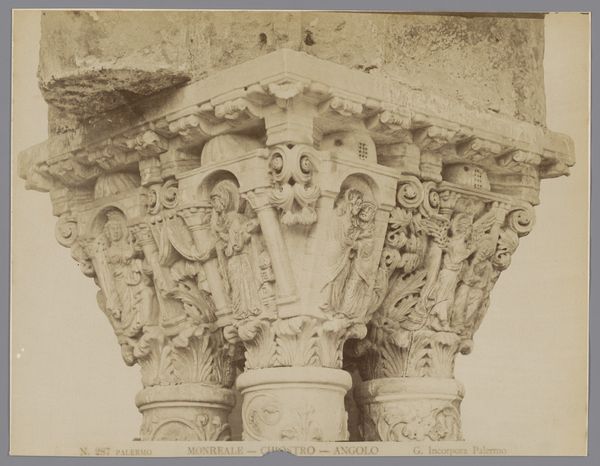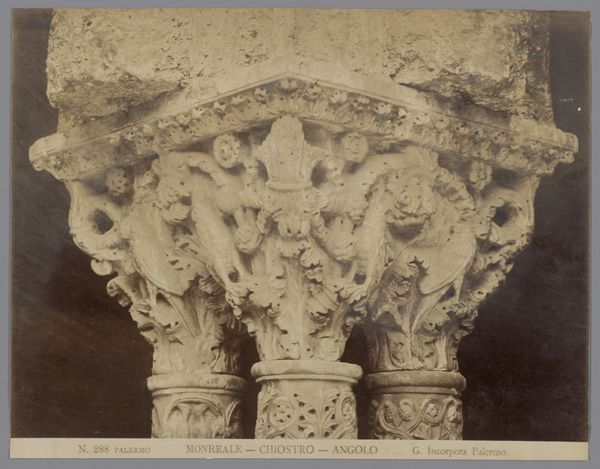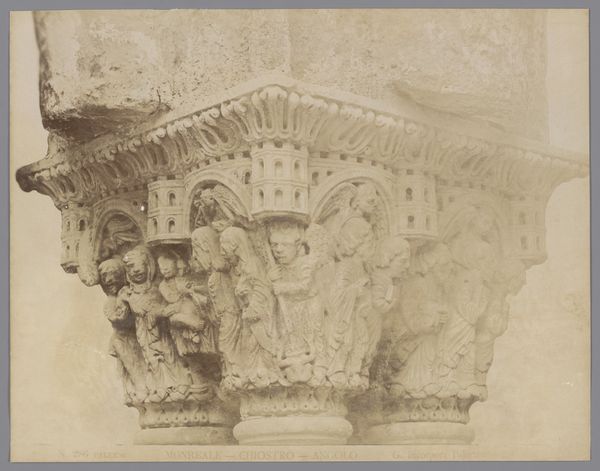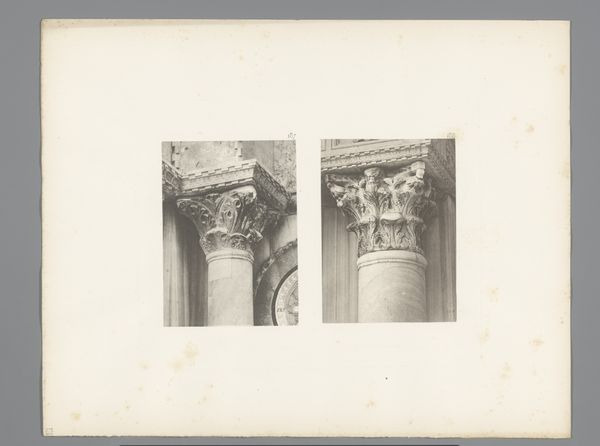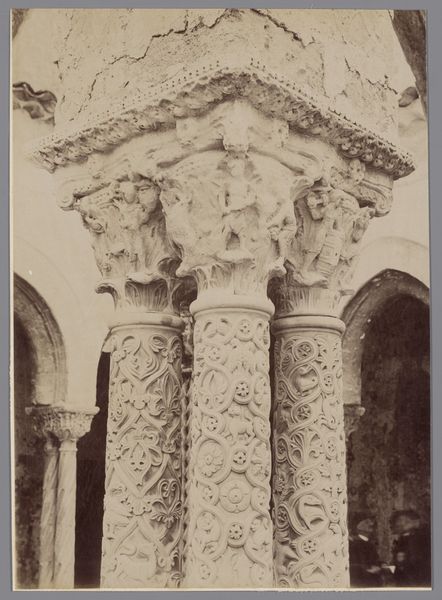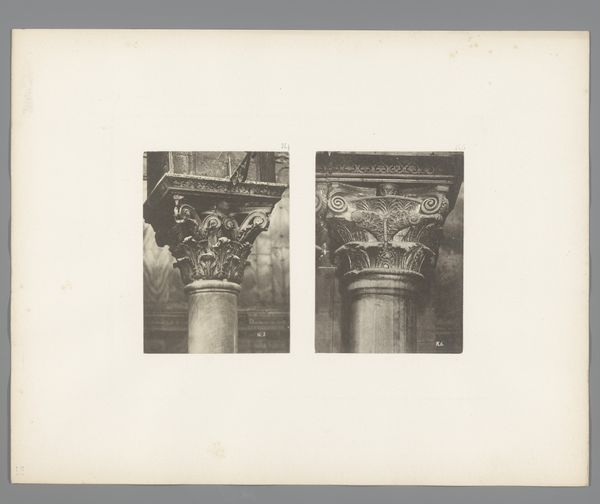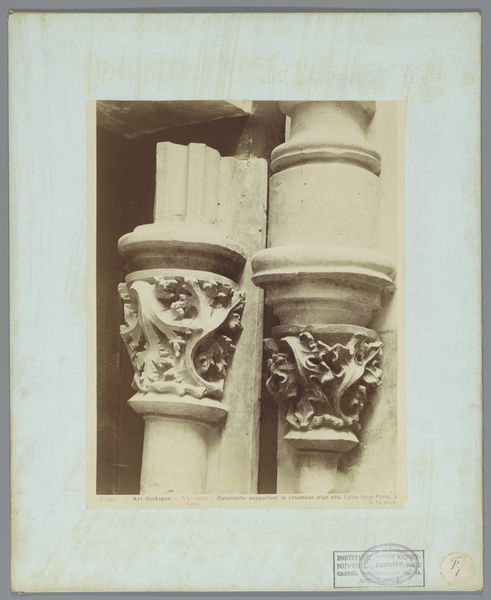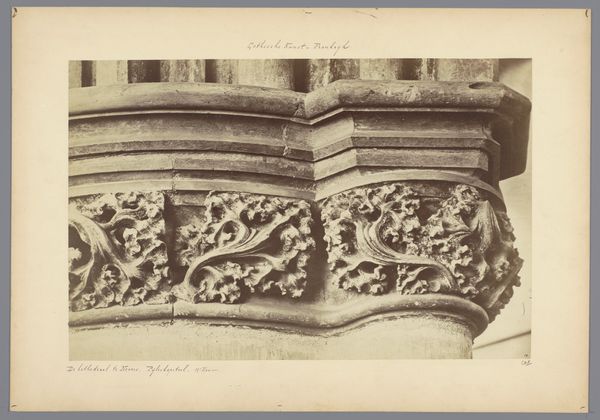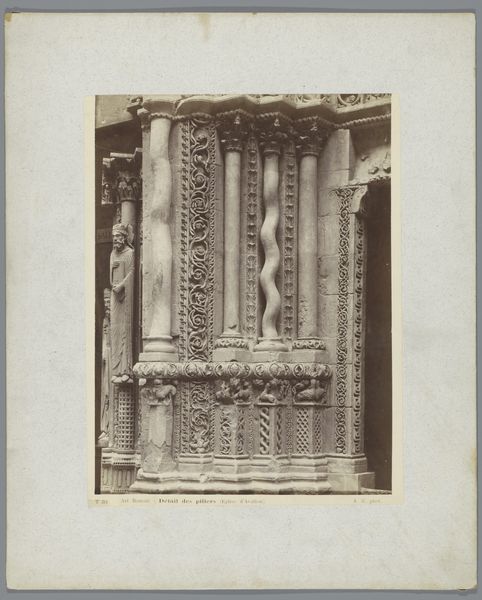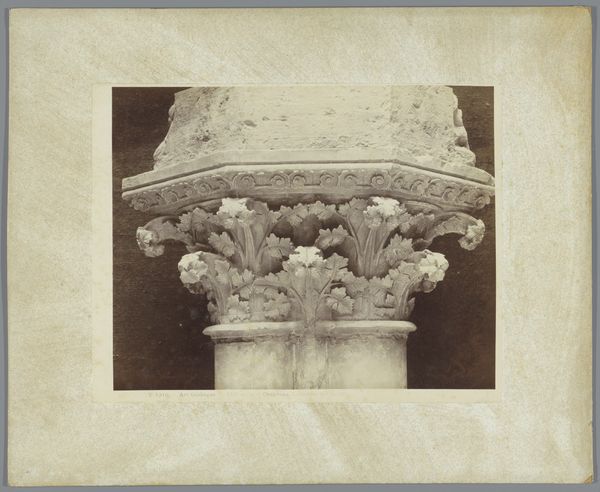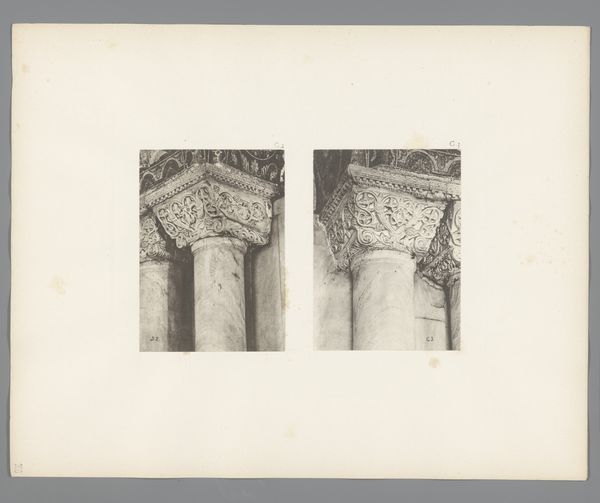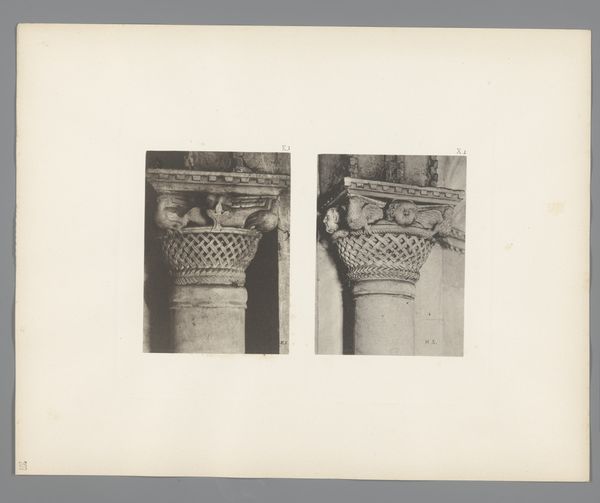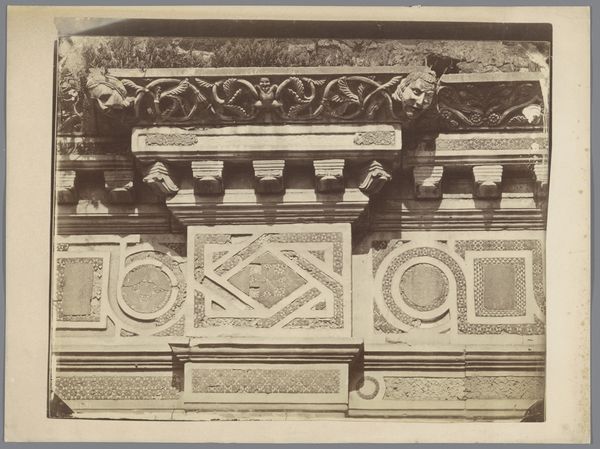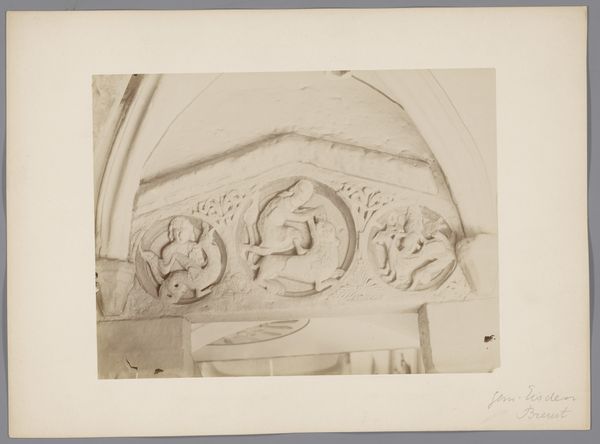
Detailopname van een kapiteel in de kloostergang van de dom van Monreale 1856 - 1914
0:00
0:00
print, photography, collotype, sculpture, marble, architecture
#
portrait
# print
#
landscape
#
classical-realism
#
figuration
#
photography
#
romanesque
#
collotype
#
sculpture
#
marble
#
architecture
#
statue
Dimensions: height 197 mm, width 248 mm
Copyright: Rijks Museum: Open Domain
Curator: The atmosphere of this print feels both serene and imposing, with intricate carvings set against what appears to be weathered stone. Editor: Exactly. Let me offer some background. This photograph, created between 1856 and 1914 by Giuseppe Incorpora, is titled “Detailopname van een kapiteel in de kloostergang van de dom van Monreale"—or, in English, a detailed shot of a capital in the cloister of Monreale Cathedral. Curator: The photograph really captures the textures beautifully. What's striking is how the human figures—are those biblical figures carved into the capital?—are integrated into the architectural design. The piece really seems to blur the boundaries between sculpture and architecture, doesn't it? Editor: Indeed. And it's key to note the significance of Monreale Cathedral. Built in the 12th century during the Norman rule in Sicily, its architecture reflects a synthesis of Norman, Arab, and Byzantine influences, an intercultural artistic program expressed as political agenda. This kind of Romanesque artwork was definitely intended to impress, to reinforce the power of the rulers and the Church through art. Curator: It’s the depiction of power that grabs me, but in a nuanced way. I find myself considering the gaze of those figures, particularly the male figures, rendered here almost vulnerable by their integration within a larger structural narrative, speaking about intersectional discourse around religious institutions. This makes the piece much more complex for me. How might contemporary eyes perceive the power dynamics on display versus their original intent? Editor: That’s an insightful point, and something we need to always ask. The presence of this photography speaks of its reproduction, of how photography shaped our understanding of architecture. These artworks were deliberately meant for public engagement, displayed for both the educated elite and for popular consumption. They are an example of art functioning as both an instrument of spiritual and earthly control. Curator: Considering how access was once limited, the photograph gives modern audiences a new way to interact with these carvings, offering alternative perspectives. I’m grateful to see the artwork’s intricacies in such sharp detail. Editor: Agreed. Giuseppe Incorpora’s photograph offers a fascinating look at cultural expression. I am glad we could spend this time exploring its cultural importance.
Comments
No comments
Be the first to comment and join the conversation on the ultimate creative platform.
